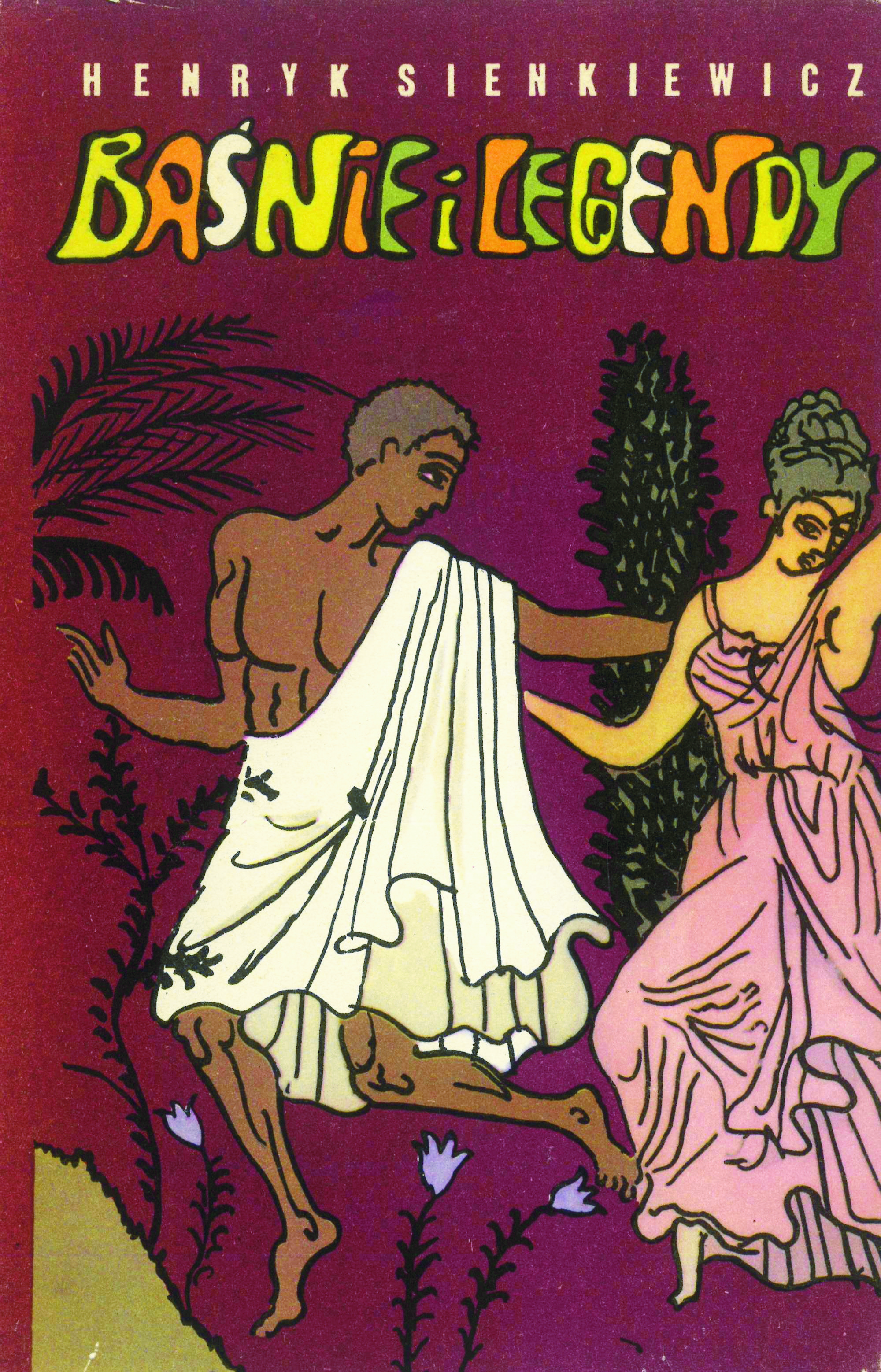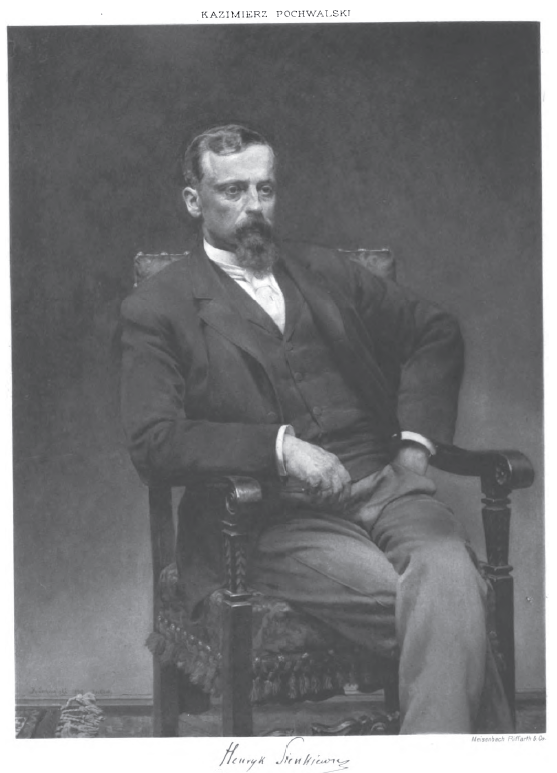Title of the work
Country of the First Edition
Country/countries of popularity
Original Language
First Edition Date
First Edition Details
Henryk Sienkiewicz, Baśnie i legendy, wyboru dokonał, wstępem i przypisami opatrzył Tomasz Jodełka-Burzecki. Warszawa: Ludowa Spółdzielnia Wydawnicza, 1967, 216 pp.
The dates of editiones principes are indicated after each title. In many cases, the year is tentative and points to the publication in a newspaper or journal, where Sienkiewicz published his opera minora. All data according to Julian Krzyżanowski who listed all Sienkiewicz’s writings in chronological order (see: Krzyżanowski, Julian, Henryk Sienkiewicz. Kalendarz życia i twórczości, Warszawa: Państwowy Instytut Wydawniczy, 1956).
Genre
Fairy tales
Legends
Target Audience
Crossover (Children, teenagers, young adults)
Cover

Cover from edition: Warsaw: Ludowa Spółdzielnia Wydawnicza, 1973. Illustrations by Józef Wilkoń. Courtesy of the publisher.
Author of the Entry:
Summary: Michał Kucharski, University of Warsaw, kucharski.michał@al.uw.edu.pl
Analysis: Marta Pszczolińska, University of Warsaw, m.pszczolinska@al.uw.edu.pl
Peer-reviewer of the Entry:
Katarzyna Marciniak, University of Warsaw, kamar@al.uw.edu.pl
Elżbieta Olechowska, University of Warsaw, elzbieta.olechowska@gmail.com

Painting of Henryk Sienkiewicz by Kazimierz Pochwalski (1855–1940), retrieved from Wikimedia Commons.
Henryk Sienkiewicz
[Litwos] , 1846 - 1916
(Author)
An eminent writer, journalist, social activist, one of the most popular Polish authors of the turn of the 19th and 20th centuries, pen-name Litwos. Dedicated and experienced traveller, he was knowledgeable about Antiquity. In 1876–1878, he was a correspondent for “Gazeta Polska” in North America, mainly in California. In 1874–1878, he was a co-owner of the scientific-literary magazine “Niwa,” in 1882–1887 he worked as editor of the conservative journal “Słowo.” He became famous as novelist focusing on the history of 17th-century Poland. His best known historical novels are Trylogia [The Trylogy]: Ogniem i mieczem [With Fire and Sword], 1884, Potop [The Deluge], 1886, and Pan Wołodyjowski [Sir Michael], 1888; other famous novels include a narrative of the time of Nero, Quo vadis?, 1896; a book on the war between Jagiellonian Poland and the Teutonic Knights Krzyżacy [The Knights of the Cross], 1900; a popular adventure story for young people W pustyni i w puszczy [In Desert and Wilderness], 1912. He wrote also short stories, e.g. Szkice wę̨glem [Sketches in Charcoal], 1877, Janko Muzykant [Janko the Musician], 1878, Latarnik [Lighthouse Keeper], 1881, and many others. For years many of his books have been compulsory and suggested readings at school. In 1905, he received the Nobel Prize in Literature for lifetime achievement as an epic writer. Many of Sienkiewicz books were made into films.
Sources:
"Sienkiewicz Henryk", in Nowa Encyklopedia Powszechna A–Z, Kraków: Krakowskie Wydawnictwo Naukowe, 2010, 877.
"Sienkiewicz Henryk", in Encyklopedia Popularna PWN, Warszawa: Państwowe Wydawnictwo Naukowe, 1982, 706.
Julian Krzyż̇anowski, Twórczość Henryka Sienkiewicza, Warszawa: Państwowy Instytut Wydawniczy, 1970.
Radosław Najdyhor, Henryk Sienkiewicz – życie i twórczość, sienkiewicz.ovh.org (accessed: Septemper 30, 2020).
Bio prepared by Agata Więcławska, University of Warsaw, a.wieclawska@student.uw.edu.pl
Summary
Based on: Katarzyna Marciniak, Elżbieta Olechowska, Joanna Kłos, Michał Kucharski (eds.), Polish Literature for Children & Young Adults Inspired by Classical Antiquity: A Catalogue (accessed: June 11, 2021), Faculty of “Artes Liberales”, Warsaw: University of Warsaw, 2013, 444 pp., section by Agata Więcławska and Michał Kucharski, pp. 346–347 and 350–353.
The collection is divided into three thematic parts: tales about Hinduism’s origins and the legends of Ancient Egypt, Greece, and Rome; fictional stories based on Polish folklore; moralistic stories. In the first section, there are seven stories inspired by Classical Antiquity.
Wyrok Zeusa. Bajka grecka [Zeus’ Judgement. A Greek Fable] [ed. pr. 1891*]: Hermes makes a bet with Apollo that he will be unable to seduce Eryfila, a silly Athenian married woman. If Apollo loses, he will have to give Hermes the beautiful shepherd girl who takes care of his herd on Thrinacia. Despite Apollo’s divine posture, his music and poetry, Eryfila rejects his advances. Apollo does not want to honour his bet with Hermes. The case is brought before Zeus. The god of the gods decrees that Hermes cheated by making a silly woman who could not appreciate Apollo the target of his bet; Hermes is expelled from Mount Ida, where Zeus’ court was taking place.
Diokles. Baśń ateńska [Diocles. An Athenian Fairytale] [ed. pr. 1906]: Diocles, a handsome Athenian, who, by properly practicing religious rites and praying to Athena, is granted a chance to experience the Supreme Truth. He goes through consecutive stages of the initiation and becomes gradually more attractive in the eyes of Athenian philosophers and poets: the beauty of his body allows them to grasp the beauty of the world. At the last stage of the initiation, Diocles is blinded by the dazzling light of the Supreme Truth, but Athena takes pity on him and ends his suffering: she gives him a merciful death.
Przygoda Arystoklesa [Aristocles’ Adventure] [ed. pr. 1906]: Ktesipos and Acrisione, a married couple from Aegina, are having a casual conversation about a new slave bought by Ktesipos. Acrisione complains about the physical weakness of the slave and his lack of skills in cutting hair and shaving. She insults and scolds her husband for making a bad investment. Later, when Acrisione asks the slave his name, he answers – Aristocles and adds immediately that his nickname is Plato.
Z dawnych dziejów [From the Ancient Times] [ed. pr. 1913]: Spartans defeated Messenians in the 5th century BCE, subsequently, they settled in Zankle (today Messina) in Sicily. Over the decades, the Messenians built a large, strong, and culturally developed state, but they never forgot their homeland in the Peloponnese peninsula. This strong awareness of their origin is handed down from generation to generation. When the Messenians learn that Thebans ended the supremacy of Sparta, they decide to return to Messenia, their ancestors' land, who were expelled from there almost one hundred years earlier.
Wesele [Wedding] [ed. pr. 1908]: the story is set in 1st century BCE Athens, under Roman rule. The Athenian city assembly members decide to honour Marc Antony in an unusual way by giving him the goddess Athena for a spouse. After the lavish wedding, overshadowing even the Panathenaic Festival, Antony, unsatisfied, convokes the Athenian politicians to the agora and openly rebukes them for giving him Athena without a dowry. For the sake of political expediency, the Athenians feel obliged to grant Antony’s request.
Pójdźmy za nim [Let’s Follow Him] [ed. pr. 1893, not included in the 1st edition of the collection published in 1967 but added in one of the following editions]: in the 1st century CE, a Roman patrician, Caius Septimus Cinna, who is a descendant of Lucius Licinius Lucullus, has the means to live sumptuously in Rome, luxuriously banqueting. He also reads Cicero, Homer, Horace, and Ovid. Finally, when he squanders all his patrimony, he moves to Alexandria. His relatives help him to obtain an official post so he can restore his fortunes. Suffering from longstanding metaphysical angst, Cinna contacts Alexandrian philosophers hoping that they would help him cure his dissatisfaction with life. In Alexandria, he also meets his future wife – Antea, who suffers from frightening and unpleasant visions which occur every day at noon. Hoping to improve her health, they move to Jerusalem and stay there at Pontius Pilate’s summer residency. They both witness Jesus Christ’s crucifixion on Mount Golgotha, and miraculously, Antea is healed. Cinna and his wife decide to follow the teachings of Jesus Christ.
Na Olimpie. Legenda [On the Mount Olympus. A Legend] [ed. pr. 1900]: a trial which takes place on Mount Olympus. The judges are St Peter and St Paul, and the ancient gods are the accused. Each ancient god begs the judges in turn for salvation. The Apostles condemn Zeus, Poseidon, Bacchus, and Athena. The only gods they acquit are Aphrodite and Apollo with his Muses. Beauty, love and poetry are ancient values that the new Christian era will accept.
* The dates of editiones principes are indicated after each title. In many cases, the year is tentative and points to the publication in a newspaper or journal, where Sienkiewicz published his opera minora. All data according to Julian Krzyżanowski who listed all Sienkiewicz’s writings in chronological order (see: Krzyżanowski, Julian, Henryk Sienkiewicz. Kalendarz życia i twórczości, Warsaw: Państwowy Instytut Wydawniczy, 1956).
Analysis
The book was not intended to be a collection by the author himself. Over 50 years after his death, the selected stories were published together in one volume because of their length and common mythical or fairy tale content, which is fully explained and commented on by the editor in the introduction. As the author was fascinated by classical Antiquity, which eventually resulted in his Nobel Prize for Quo vadis?, he also did not avoid short stories in which Greek mythology and history play the main role.
Sienkiewicz used the short form to amaze with unconventional, surprising endings. Good examples of his light and witty style can be seen in Zeus’ Judgement, Aristocles’ Adventure, or The Wedding. In some of these tales, the ancient gods play the key role in short scenes as if they were not myths created by Sienkiewicz but retold – the author even uses the subtitles to indicate such ideas (a fable, an Athenian fairy tale, a legend). The world of Greek gods is described according to their prerogatives and attributes but is a pretext to present general problems concerning humanity: stupidity, ignorance, selfishness, and greed. The collection also includes short stories set in historical reality, not in a mythical one, in which gods appear among people and influence their fate. From the Ancient Times or The Wedding are both set in a specific time period. The latter maintains a witty convention of unexpected twists of action, shows Marc Antony as a smart politician and an interesting business person, and alludes to contemporary politics. The text shows an implicit aversion towards the supporters of subordination to the tsar and the partitioners’ rule. From the Ancient Times was written in 1913 when the spectre of war was hanging over the country. It alludes to Poland's current socio-political situation, a country without statehood. It shows an environment of emigrants missing their lost homeland, waiting for a few generations abroad for an opportunity to return, and finally ready to abandon everything they have achieved and go to the old country even though the conditions there became more difficult.
The editor placed the stories not in chronological order according to the date of publication but according to the time of action. So mythical stories go first, then those set in the 5th century BC (Plato, Messenians), the Hellenic period, the Roman period, and at the end – the “legend” of the judgement on the Mt Olympus. The ancient gods lose their relevance and are replaced by a new one in the new era. In the first edition, the first part ended here, but later the editor added the thematically connected legend titled, Let’s Follow Him to introduce the reader to Sienkiewicz’s opus magnum concerning Roman Antiquity. The author depicted many phenomena of the ancient world as background, like scenes from everyday life, philosophical movements, seeking the Truth, religiousness, rites, slavery, politics, warfare, colonization and so on, always colorful and reliable.
The book contains black-and-white illustrations by Antoni Uniechowski (1903–1976), a famous illustrator drawing in his characteristic manner of light ink lines with pen and brush. He illustrated about 200 Polish and world classic books using ink, often enriched with watercolors or gouache. He was known for his illustrations of Sienkiewicz’s Potop, the second part of his famous trilogy. The second part of the present collection contains spin-off stories with the same protagonists as in the trilogy.
Further Reading
Krzyżanowski, Julian, Henryk Sienkiewicz. Kalendarz życia i twórczości, Warszawa: Państwowy Instytut Wydawniczy, 1956.
Krzyżanowski, Julian, Henryka Sienkiewicza żywot i sprawy, Warszawa: Państwowy Instytut Wydawniczy, 1981.
Addenda
Illustrators:
Editio princeps, 1967: Antoni Uniechowski (1903–1976),
1970, 1973, 1975: Józef Wilkoń,
1978: Marian Murawski,
1986: no information,
1991, 1996: Karol Precht.


